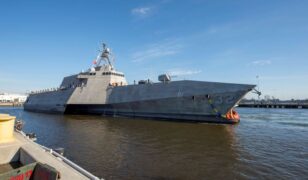Maritime Sustainment Technology and Innovation Consortium forms

On June 25, Summerville, SC-based Advanced Technology International (ATI) announced the award of the Maritime Sustainment Technology and Innovation Consortium (MSTIC), which will address current and future security threats in maritime environments. MSTIC is a collaboration executed under an Other Transaction Agreement (OTA) with the Naval Surface Warfare Center, Philadelphia Division (NSWCPD) to develop and mature technologies that enhance the Navy’s mission effectiveness.
The OTA has a base term of three years with options for seven additional years. The hallmarks of OTAs are simplicity, flexibility, and open communication. They are designed to attract innovative non-traditional technology developers, who previously could not or would not do business with the government. The components of a successful consortium are objectivity, active collaboration, and an expansion of the defense industrial base. OTAs and consortia are powerful complements.
More than 120 organizations – made up of traditional and non-traditional contractors, small and large businesses, for-profit and non-profit entities, and academia – have already become members of MSTIC with hundreds more signing letters of intent. These organizations will perform R&D prototyping efforts within MSTIC’s technology focus areas. The overarching topic areas are:
- Commercial Off-The-Shelf (COTS) Obsolescence and Tech Refresh Product Development
- Data Transformation
- Cyber
- Fleet Introduction Technologies
- Waterfront Industrial Support Operations
- Asset Fabrication, Revitalization (Remanufacturing) and Packing
- Logistic and Supply Chain Management
- Research and Development
“When industry, academia, and government collaborate, we serve our country in the most effective way possible,” said Chris Van Metre, ATI president and CEO. “We look forward to serving NSWCPD and the Navy. MSTIC has all the right ingredients to become the premier consortium to develop and mature technologies in maritime sustainment.”
Source: ATI








